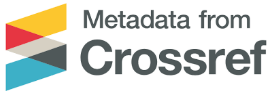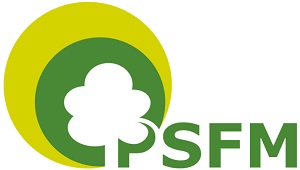NGHIÊN CỨU HIỆN TRẠNG GÂY TRỒNG CÂY SƯA TẠI PHÍA BẮC VIỆT NAM
Từ khóa:
Bệnh hại, cây giống, cây Sưa, gỗ lõi, hạt giống, hình thân,, tăng trưởng, vườn hộTóm tắt
Cây Sưa là một trong những loài cây gỗ quý, có giá trị kinh tế cao nên những năm gần đây được gây trồng khá phổ biến. Nghiên cứu này nhằm đánh giá hiện trạng nguồn hạt giống, kỹ thuật gieo ươm, gây trồng cây Sưa trong vườn hộ và rừng trồng ở 16 tỉnh phía Bắc và kỹ thuật tạo lõi. Kết quả điều tra cho thấy nguồn hạt giống Sưa chủ yếu được thu từ các cây mẹ không được tuyển chọn tại Vĩnh Phúc và một phần thu từ các cây phân tán tại các tỉnh. Cây con ở giai đoạn 5 tháng tuổi trung bình đạt 50,5 cm về chiều cao và 5,3 mm về đường kính gốc, cây con gieo từ nguồn giống đã được chọn lọc có sinh trưởng tốt nhất, ít bị bệnh. Phương thức trồng chủ yếu là trồng trong các vườn hộ với quy mô từ 50 - 100 cây. Tăng trưởng bình quân cao nhất có thể đạt 1,5 m/năm về chiều cao và 1,6 cm/năm về đường kính ở giai đoạn < 5 năm tuổi, trong đó cây Sưa trồng ở Sơn La, Bắc Ninh và Hà Nội sinh trưởng tốt nhất. Tuy nhiên, ở
một số nơi như Hòa Bình, Ninh Bình và Nghệ An do chọn giống không tốt cộng với biện pháp kỹ thuật không đảm bảo nên cây sinh trưởng chậm, cong queo, tỷ lệ cây đa thân cao (37,5 - 58,3%). Ở tất cả các địa điểm điều tra đều ghi nhận có bệnh loét thân, trong đó cây trồng tại Tuyên Quang và Phú Thọ bị bệnh nặng hơn. Bước đầu thí nghiệm tạo lõi và buộc ép thân cây bằng cọc, kết quả cho thấy kỹ thuật tạo lõi hiệu quả là cắt 100% cành + xén 50% rễ hay cắt cành 100% cành + đảo cây và buộc cây sau 2 năm làm giảm độ cong của cây. Từ kết quả nghiên cứu đã đánh giá được các ưu, nhược điểm của các biện pháp kỹ thuật gieo ươm, gây trồng, tạo lõi, từ đó đề xuất kỹ thuật gây trồng cây Sưa để khuyến cáo sớm cho người trồng rừng áp dụng và làm cơ sở cho việc xây dựng hướng dẫn kỹ thuật
Tài liệu tham khảo
1. Chính phủ, 2006. Nghị định số 32/2006/NĐ-CP ngày 30/3/2006 của Chính phủ về quản lý thực vật rừng, động vật rừng nguy cấp, quý hiếm.
2. Cuong, N.M., Nhan, N.T., Son, N.T., Nghi, D.H. and Cuong, T.D., 2017. “Daltonkins A and B, two new carboxyethylflavanones from the heartwood of Dalbergia tonkinensis”. Bulletin of the Korean Chemical Society,38:1511 - 1514.
3. Đặng Ngọc Thanh và Nguyễn Tiến Bân, 2007. “Danh lục đỏ Việt Nam - Vietnam Red List”. NXB Khoa học tựnhiên và Công nghệ. 412 trang.
4. Đỗ Văn Bản, Nguyễn Quang Hưng và Nguyễn Hào Hiệp, 2009. “Cấu tạo gỗ cây Sưa (Dalbergia tonkinensisPrain)”. Tạp chí Khoa học Lâm nghiệp, (4): 1131 - 1132.
5. Fan, Z.M., Wang, D.Y., Yang, J.M., Lin, Z.X., Yang, A.L., Fan, H., Cao, M., Yuan, S., Liu, Z.J., Zhou, X. and Wang, Y.H., 2017. “Dalbergia odorifera extract promotes angiogenesis through upregulation of VEGFRs and PI3K/MAPK signaling pathways”. Journal of Ethnopharmacology, (204): 132 - 141.
6. Nguyễn Hoàng Nghĩa, 2008. “Át lát cây rừng Việt Nam”. NXB Bản đồ, tập 2, 249 trang.
7. Nguyễn Minh Chí, Đoàn Hồng Ngân, Nguyễn Văn Thành và Nông Phương Nhung, 2015. “Nghiên cứu ảnh hưởng của đất và phân bón đến chất lượng cây Sưa trong giai đoạn vườn ươm”. Tạp chí Khoa học Lâm nghiệp,1: 3700 - 3707.
8. Nhung, N.P., Thu, P.Q., Dell, B. and Chi, N.M., 2018. “First report of canker disease in Dalbergia tonkinensiscaused by Fusarium lateritium and Fusarium decemcellulare”. Australasian Plant Pathology, 47(3): 317 - 323.
9. Thông báo của tỉnh Vĩnh Phúc số 132/TB - TTDVBĐGTS ngày 17/6/2013 về việc bán đấu giá tài sản Nhà nước.
10. Vatanparast, M., Klitgård, B.B., FAdema, A.C.B., Pennington, R.T., Yahara, T. and Kajita, T., 2013. “First molecular phylogeny of the pantropical genus Dalbergia: implications for infrageneric circumscription and biogeography”. South African Journal of Botany, (89): 143 - 149.
11. Vũ Tiến Hinh và Phạm Ngọc Giao, 1997. Giáo trình điều tra rừng, Trường Đại học Lâm nghiệp. 183 trang.
12. Wang, H., Mei, W.L., Zeng, Y.B., Zuo, W.J., Guo, J.K., Chen, L.L., Zhong, H.M. and Dai, H.F., 2014. “Phenolic compounds from Dalbergia odorifera”. Phytochemistry Letters, (9): 168 - 173.
13. Xu D., Lu J., Liu X., Zhang N. and Yang Z., 2012. Mixed Plantation of Santalum album and Dalbergia odorifera in China. Proceeding in Asia and the Pacific Workshop, Multinational and Transboundary Conservation of Valuable and Endangered Forest Tree Species, IUFROWorld Series Vol. 30, IUFRO, Kuala Lumpur: 17 - 18.












